#永乐宫/Yongle Palace
Text
[Hanfu · 漢服]Chinese immortal Hanfu <西王母/Queen Mother of the West> Based On Yuan Dynasty Taoist Temple Mural<永乐宫/Yongle Palace>
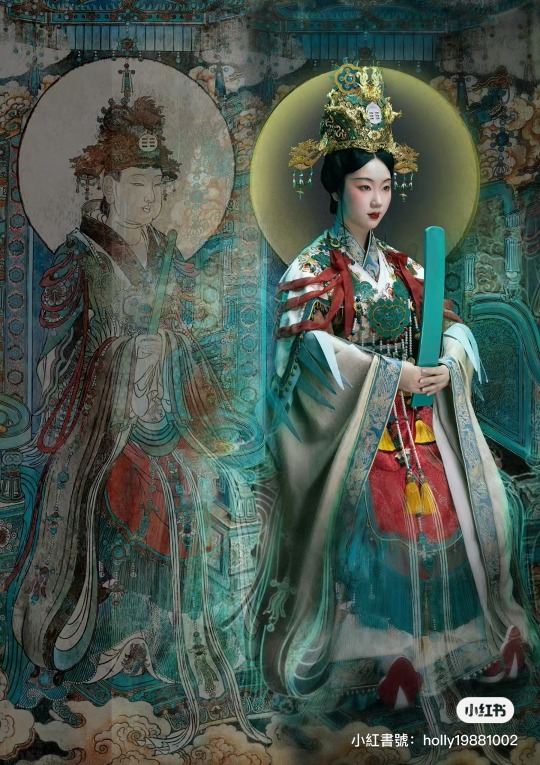
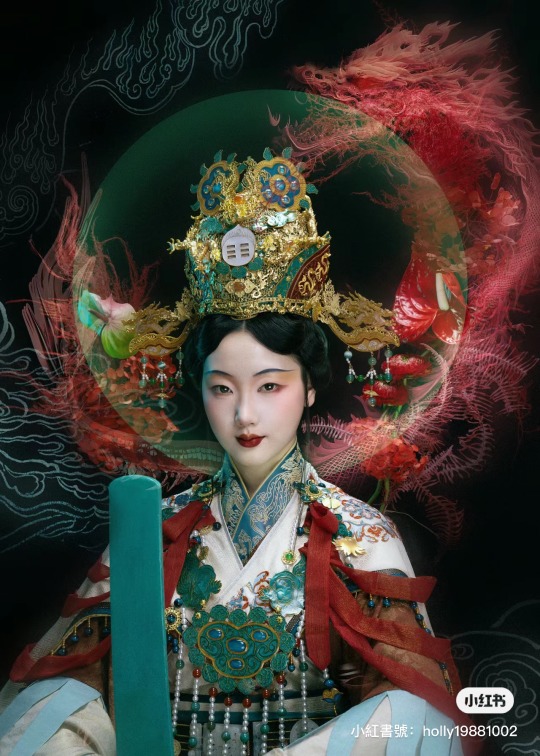
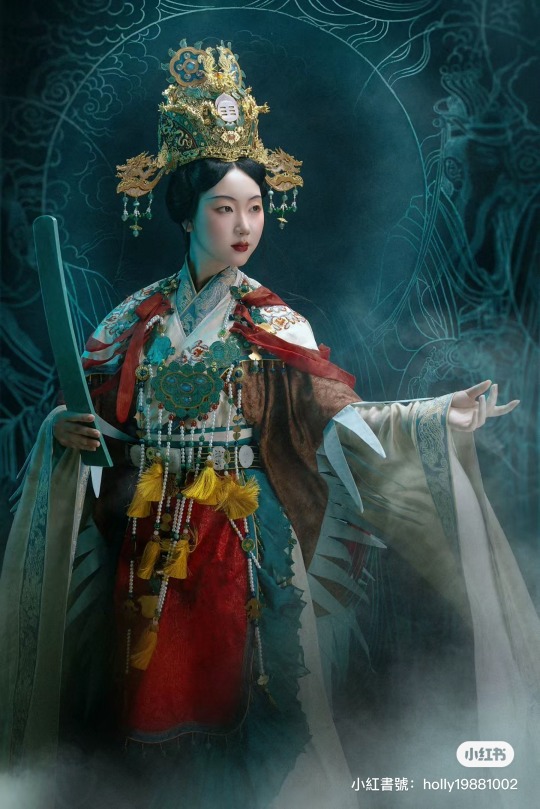
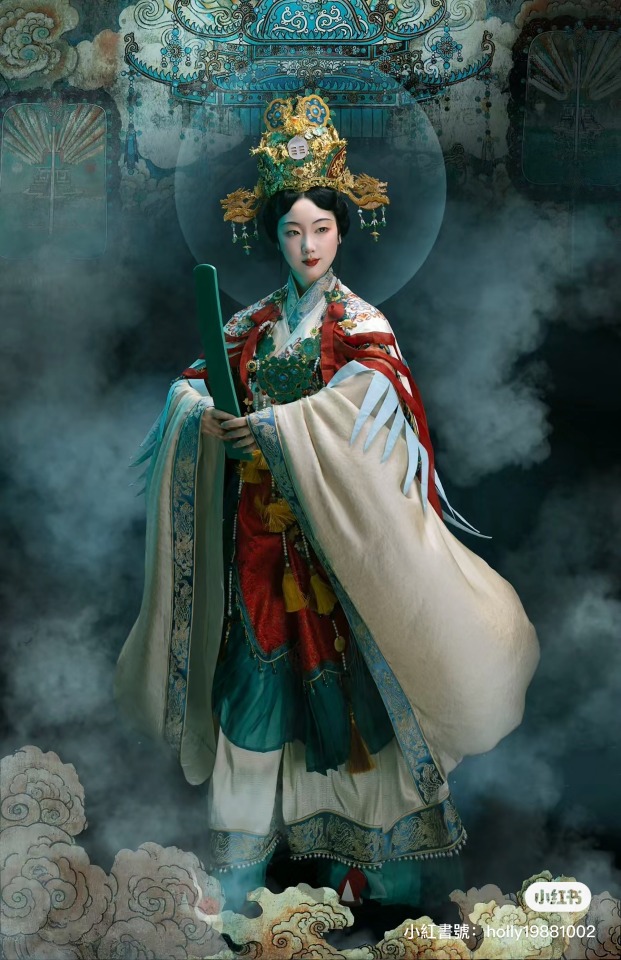
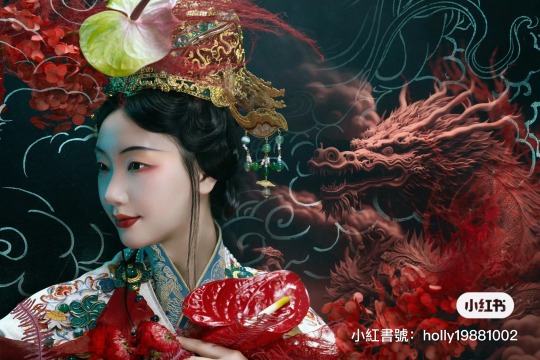
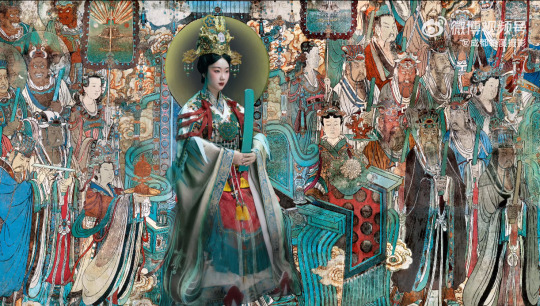
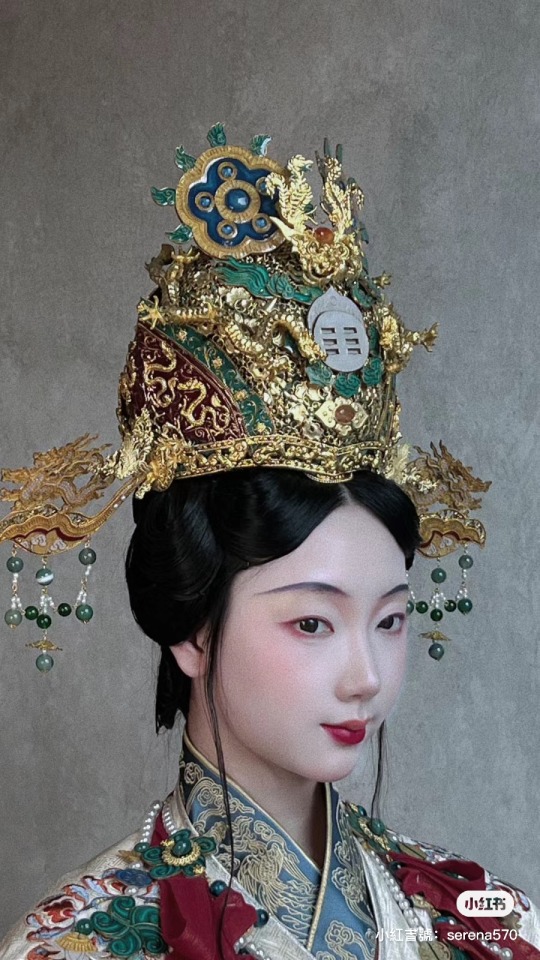
【Historical Artifacts Reference 】:
▶ China Yuan Dynasty Taoist Temple 永乐宫/Yongle Palace Mural


<西王母/Queen Mother of the West>
The Queen Mother of the West, known by various local names, is a mother goddess in Chinese religion and mythology, also worshipped in neighbouring Asian countries, and attested from ancient times.
The first mentions of the Queen Mother date back to the oracle bone inscriptions of the Shang dynasty (1766 – 1122 BCE).
One inscription reads:
Crack-making on day IX (9th day), we divined. If we make offering to the eastern mother and the western mother, there will be approval.
Western Mother refers to an archaic divinity residing in the west. The exact nature of the Mother divinities in the Shang dynasty is unclear, but they were seen as powerful forces deserving of ritual by the people of the Shang dynasty.
Originally, from the earliest known depictions of her in accounts like the Classic of Mountains and Seas during the Zhou dynasty, she was a ferocious goddess of death with the teeth of a tiger, who rules over wild beasts and sends down heavenly punishments such as pestilences. She was also mentioned as an authority ruling over other divinities such as Jiutian Xuannü, a goddess of war and sex.
Other stories hold that she is a mountain goddess or a divine tigress. She is also popularly thought to have blessed the Eight Immortals with their supernatural abilities.
After her integration into the Taoist pantheon, she gradually took on associations with other aspects, such as immortality, as well.
The Queen Mother of the West is most often depicted holding court within her palace on the mythological Mount Kunlun, usually supposed to be in western China (a modern Mount Kunlun is named after this). Her palace is believed to be a perfect and complete paradise, where it was used as a meeting place for the deities and a cosmic pillar where communications between deities and humans were possible.At her palace she was surrounded by a female retinue of prominent goddesses and spiritual attendants. One of her symbols is the Big Dipper.
Although not definite there are many beliefs that her garden had a special orchard of longevity peaches which would ripen once every three thousand years,others believe though that her court on Mount Kunlun was nearby to the orchard of the Peaches of Immortality. No matter where the peaches were located, the Queen Mother of the West is widely known for serving peaches to her guests, which would then make them immortal. She normally wears a distinctive headdress with the Peaches of Immortality suspended from it.
Flourishing parasols, we reach the chronograms' extremity;
Riding on the mist, I wander to Lofty Whirlwind Peak.
The Lady of the Supreme Primordial descends through jade interior doors;
The Queen Mother opens her Blue-gem Palace.
Celestial people—What a Crowd!
A lofty meeting inside the Cyan Audience Hall.
Arrayed Attendants perform Cloud Songs;
Realized intonations fill the Grand Empty Space.
Every thousand years, her purple crabapple ripens;
Every four kalpas, her numinous melon produces abundantly.
This music differs from that at the feast in the wilderness—
So convivial, and certainly infinite.— Wu Yun (Complete Tang Poems 1967, line 4942)
One of the earliest written references to the Queen Mother comes from the writings of the Taoist writer Zhuangzi (c. 4th century BCE):
The Queen Mother of the West obtained it [the Dao]... ...and took up her seat at Shao kuang. No one knows her beginning; no one knows her end.
Zhuangzi describes the Queen Mother as one of the highest of the deities, meaning she had gained immortality and celestial powers. Zhuangzi also states that Xiwangmu is seated upon a spiritual western mountain range, suggesting she is connected to not only the heavens, but also to the west.
Legendary encounters
In Tu Kuang-ting's text, he includes narrative accounts of the Queen Mother's encounters with legendary Chinese heroes. One such account narrates an encounter between the Queen Mother and Laozi (Lord Lao):
"In the 25th year of King Chao of the Chou dynasty (1028 BCE) …"
"…Lord Lao and the realized person Yin Hsi went traveling…"
"…on their behalf, the Queen Mother of the West explicated the Scripture of Constant Purity and Quiet."
In this account, the Queen Mother plays the role of Laozi's superior and is credited with the ultimate authorship of the Dao De Jing. This dichotomy of the Queen Mother as the superior is a characteristic of Shangqing Taoism, a goddess worshiping sect of Taoism of which Tu Kuang-ting was a master. There is also an account of a meeting between the Queen Mother and Laozi in Tang poetry.[18] This account however, being of traditional Taoist thought, has the Queen Mother taking an inferior role to Laozi, calling him "Primordial Lord" (the title of his highest manifestation) and pays homage to the sage.

<China Han Dynasty stone-relief showing 西王母/Queen Mother of the West from Sichuan,China>

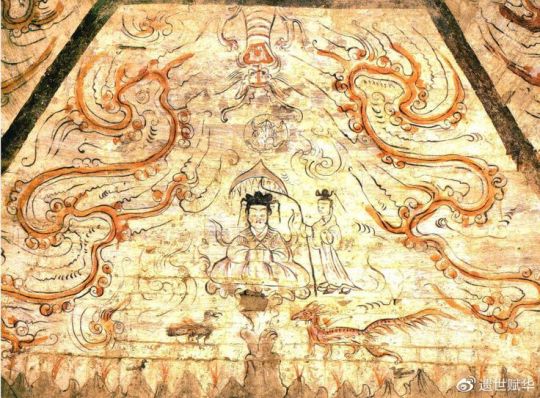
<China Wei and Jin Dynasties Mural showing 西王母/Queen Mother of the West>
————————
📸Photography post-production :@小何力
👗Hanfu & 👑Crown:@雁鸿Aimee
💄 Makeup:百丽 (临溪摄影)
👭Model:@清音音音音
🔗 Weibo:https://weibo.com/1648616372/O2R5bpBud
————————
#chinese hanfu#immortal hanfu#西王母/Queen Mother of the West#Chinese mythology#hanfu#hanfu accessories#hanfu_challenge#chinese traditional clothing#china#chinese#chinese history#china history#漢服#汉服#中華風#小何力#雁鸿Aimee#永乐宫/Yongle Palace
232 notes
·
View notes
Photo

#元代建筑 #全真教#祖庭#永乐宫#重阳殿#袭明殿#七真殿 #国一 #芮城县(在 永乐宫 Yongle Palace) https://www.instagram.com/p/CD7XhLSJIIF/?igshid=1mv3w29n248a
0 notes
Text
[Hanfu · 漢服]Chinese Historical immortal Hanfu Based On Yuan Dynasty Taoist Temple Mural<永乐宫/Yongle Palace>
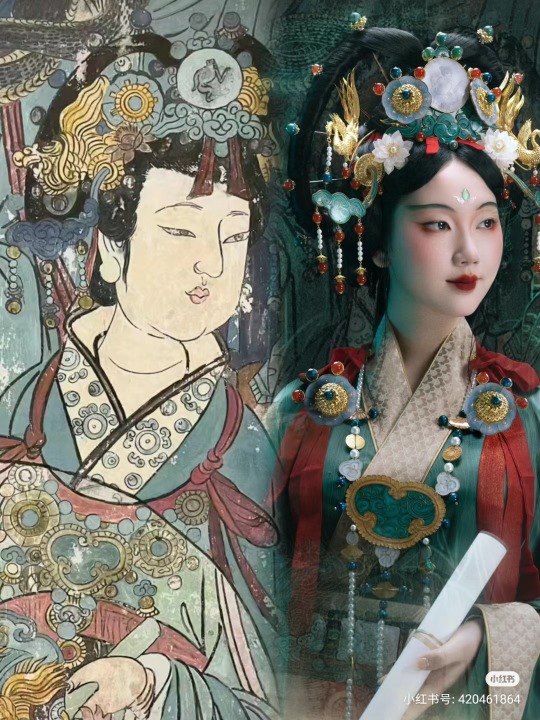
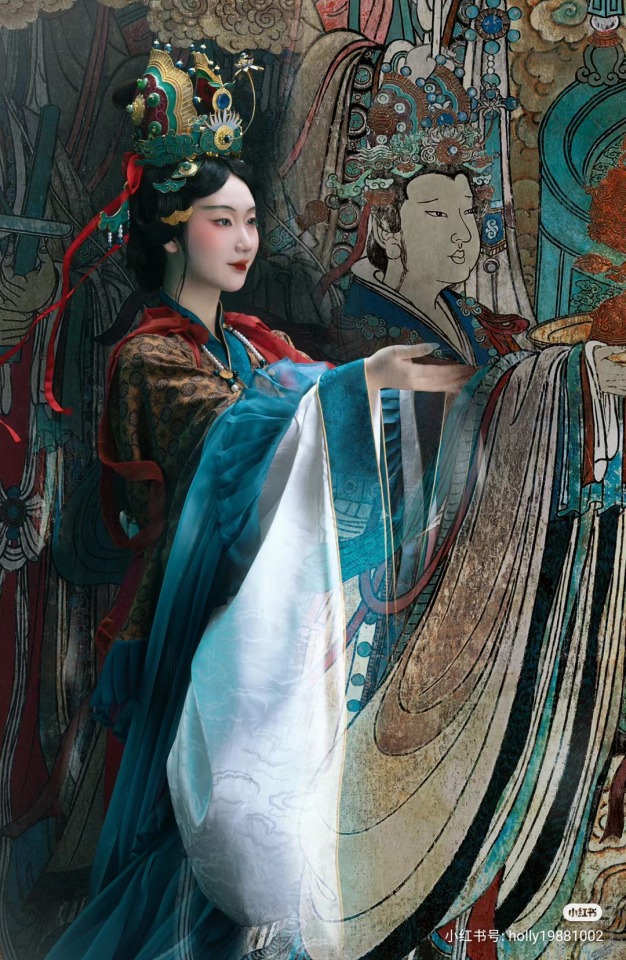
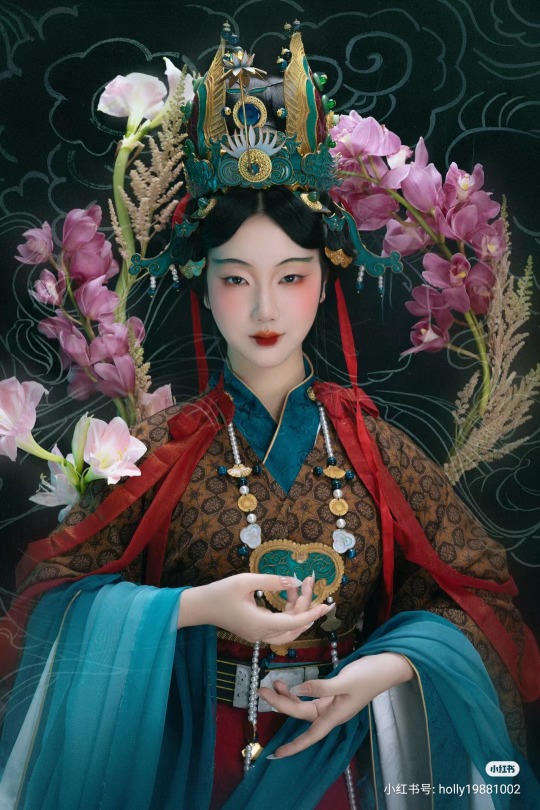

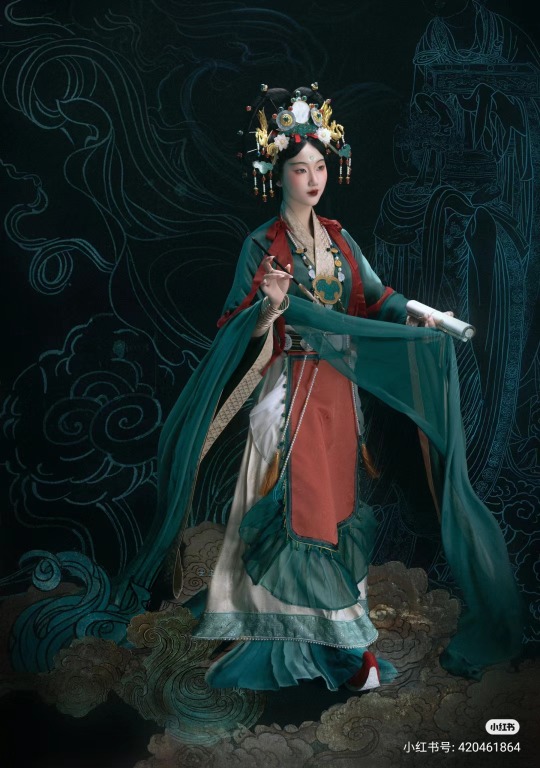



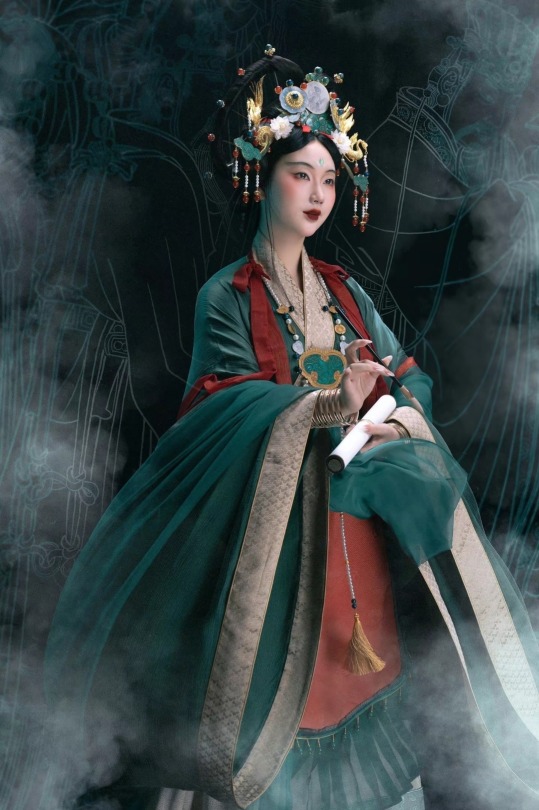





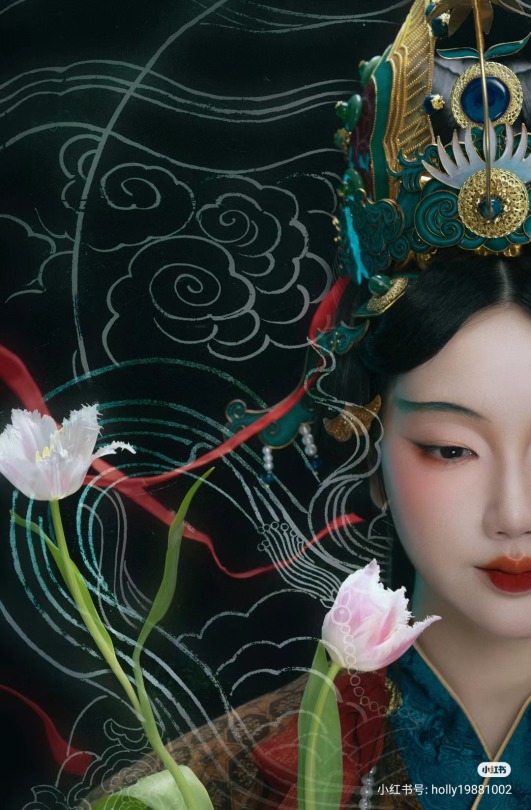


【Historical Artifacts Reference 】:
▶ China Yuan Dynasty Taoist Temple 永乐宫/Yongle Palace Mural
<水星神>:The "Statue of Water Stars God" is located among the gods on the east wall of the north wall of the Sanqing Hall of Yongle Palace. It is one of the five elements of Taoist statues of Water Stars God. According to Taoist norms, Water Stars is a female statue of a scribe wearing an ape crown. It belongs to the monkey god of the zodiac and is used as a written document.

<奉宝玉女>:The immortal attendant who presented the treasure.
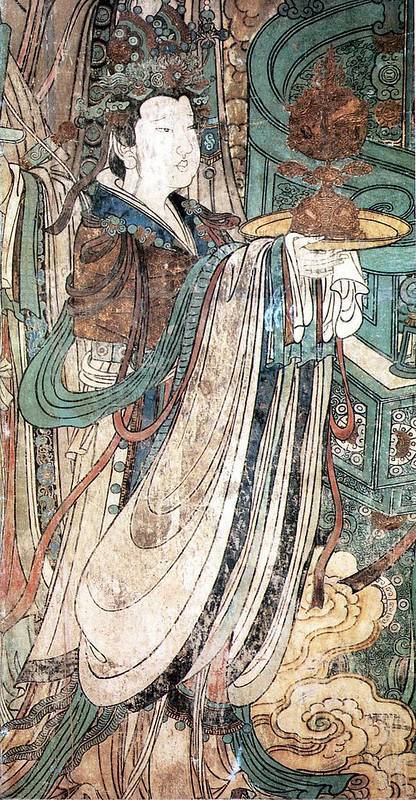
————————
📸Photography post-production :@小何力
👗Hanfu:@雁鸿Aimee
💄 Makeup:百丽 (临溪摄影)
👭Model:@清音音音音
🔗 Weibo:https://weibo.com/1615560544/NDD5YEY5x
————————
#chinese hanfu#hanfu#immortal hanfu#hanfu accessories#chinese traditional clothing#hanfu_challenge#china#chinese#永乐宫/Yongle Palace#漢服#汉服#中華風#taoism#immortal#小何力#清音音音音
402 notes
·
View notes
Photo

#元代建筑 #全真教#祖庭#永乐宫#纯阳殿 #国一 #芮城县(在 永乐宫 Yongle Palace) https://www.instagram.com/p/CD7XO8uJRol/?igshid=1xxidj8xoiktz
0 notes
Photo

#临摹 #朝元图#元代壁画 #全真教#祖庭#永乐宫#无极殿#三清殿 #国一 #芮城县(在 永乐宫 Yongle Palace) https://www.instagram.com/p/CD7Wu8XJ0CS/?igshid=1qi5zosz16ctq
0 notes
Photo
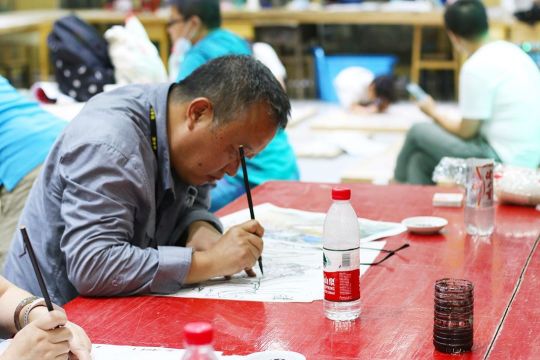
#临摹 #朝元图#元代壁画 #全真教#祖庭#永乐宫#无极门#龙虎殿#石狮子 #元狮如狗 #国一 #芮城县(在 永乐宫 Yongle Palace) https://www.instagram.com/p/CD6Ci30pWPc/?igshid=1f3likzicnmbs
0 notes
Photo

#元代建筑 #全真教#祖庭#永乐宫#无极殿#三清殿 #国一 #芮城县(在 永乐宫 Yongle Palace) https://www.instagram.com/p/CD6CFOxJ6RX/?igshid=l0chw2pbkfuv
0 notes
Photo

#无极站桩功 #全真教#祖庭#永乐宫#无极门#龙虎殿 #国一 #芮城县(在 永乐宫 Yongle Palace) https://www.instagram.com/p/CD6BsFFpHo-/?igshid=ic5fxd1xmlfg
0 notes
Photo
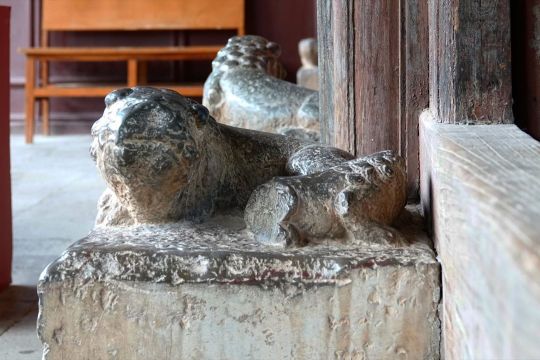
#元代建筑 #永乐宫#无极门#龙虎殿#石狮子 #国一 #芮城县(在 永乐宫 Yongle Palace) https://www.instagram.com/p/CD5dqDmpgPd/?igshid=ji0xt61p7bdz
0 notes
Photo

#元代建筑 #永乐宫#无极门#龙虎殿#鸱吻 #国一 #芮城县(在 永乐宫 Yongle Palace) https://www.instagram.com/p/CD5divWpR6x/?igshid=1pxgt49exnsay
0 notes
